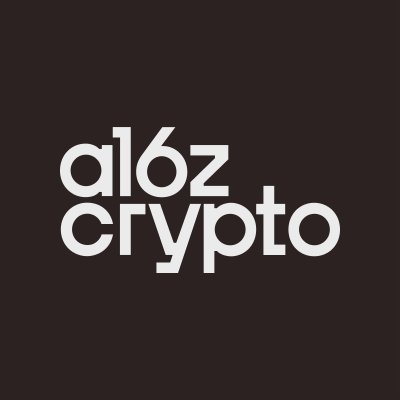a16z Partner: How to Achieve Success in the Creator Economy? 4 Theories Driving the Creator Economy
Author: Andrew Chen, General Partner at a16z, Fund Manager of Games Fund One
Compiled by: Luffy, Foresight News
In recent years, as social media platforms have gradually risen, content creators have become the focus of consumer engagement, leading to a wave of growth in creator economy startups. These startups promise creators that by promoting their products, they can help them monetize better through their audiences on social media. Thus, we often see creators promoting new products from startups through links in their bios, videos, and other means, attracting their fans to a landing page that allows creators to utilize new interactions or features. Initially, these products almost all started from a "tipping" model, but over the years, many creative products have emerged, ranging from e-commerce to newsletters to Q&A, etc. These products promise a win-win with creators, so when their fans make purchases, the company only takes a certain percentage of the revenue (usually around 10%), while the rest goes to the creators.
Some creator economy companies have achieved tremendous success, paying creators billions of dollars in revenue, while others have struggled. Successful startups have strong moats, making it difficult for new entrants to break through. After several years, what new insights do we have about the dynamics of the industry? Why have some creator economy startups succeeded while others have failed?
Here are some of my theoretical summaries:
- Creator Power Law: A small number of creators hold the majority of the audience, leading to potential vulnerabilities and dependencies for creator economy startups.
- Bio Link Battle: Creator economy companies acquire audiences from larger social media platforms, which typically have only one spot (the bio link) to promote a company. This is a zero-sum game where the winner takes all.
- Graduation Problem: Startups often charge a certain percentage of fees, and if creators acquire their own customers, they will pressure you to lower costs. The biggest creators often "graduate" from a platform and then build their own.
- Algorithm Feast: Creator traffic is driven by social feedback algorithms, leading to spikes in traffic that then disappear—this is contrary to the stable, lasting growth that startups seek.
These are concepts I have learned from conversations with dozens of creator economy companies over the past few years. As the next generation of creator economy startups emerges, they must figure out how to navigate these dynamics. Let’s delve deeper.
Creator Power Law
Do you want to start a creator economy company? The biggest force you must grasp is the power law of the audience and revenue of the creator tier itself.
The chart below shows the percentage of income that the top creator earns on platforms like Patron, while the income of the second, third, and fourth-ranked creators declines sharply (Source: Power Law in Culture).
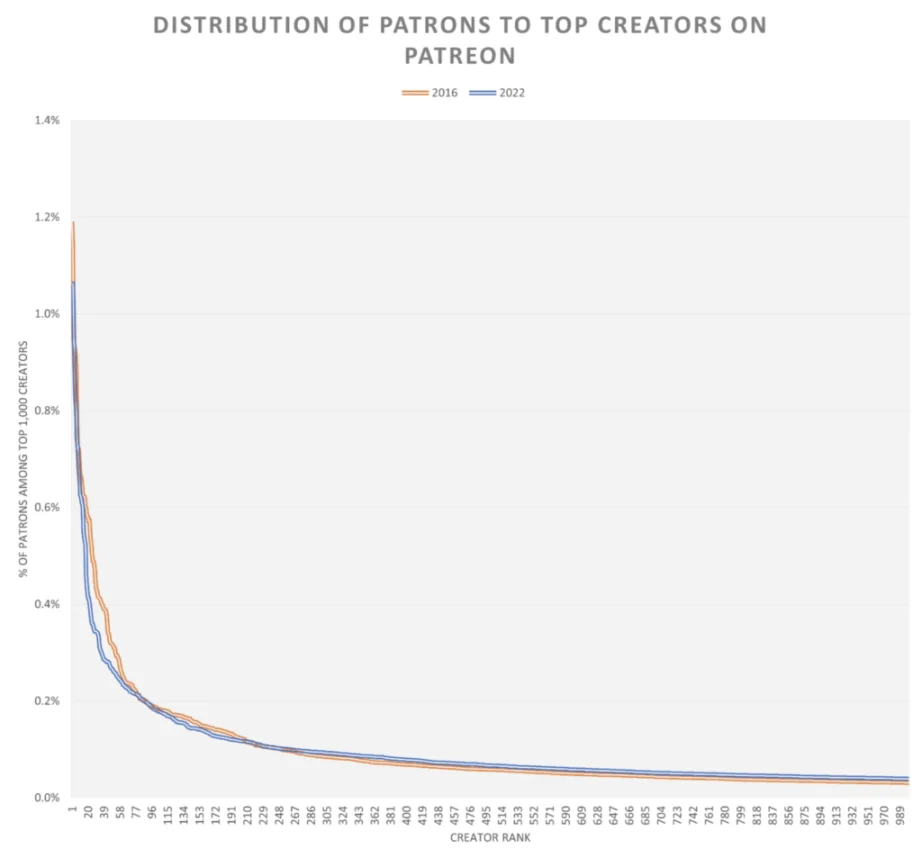
Imagine if you plotted all millions of creators on this axis, you would see it eventually flatten out, approaching 0%. There are many reasons for this phenomenon, primarily because these creator platforms are built on social media, which itself records the power law distribution of fans and content participants. Conversely, due to algorithmic discovery, social media platforms exhibit power law curves, where a few social butterflies know more people than even the power law curve suggests.
Therefore, any creator economy product built on social platforms will inherit these power law curves. OnlyFans creators provide free content on many social platforms and then attract traffic to their landing pages. Below is a chart of creator income showing a similar curve distribution. While some creators earn as much as $100,000 per month, the median is only $180/month.
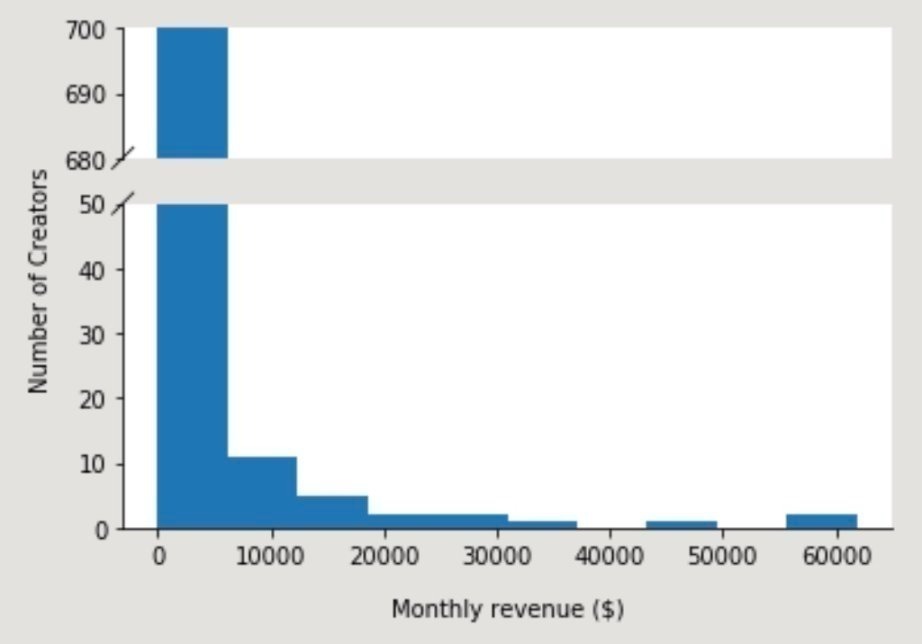
While power laws naturally appear in social media platforms, they also manifest in other creative works, including television, film, music, and more. The following image is an example from television (Source: Power Law in Culture):
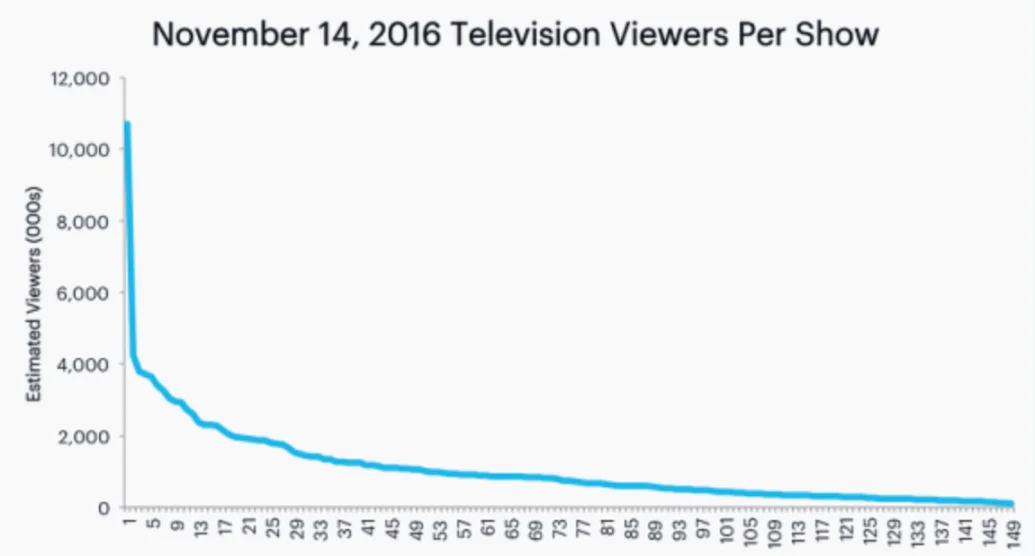
A small number of hit shows attract all the viewers. The same phenomenon occurs in video games, movies, novels, directors, writers, and more:
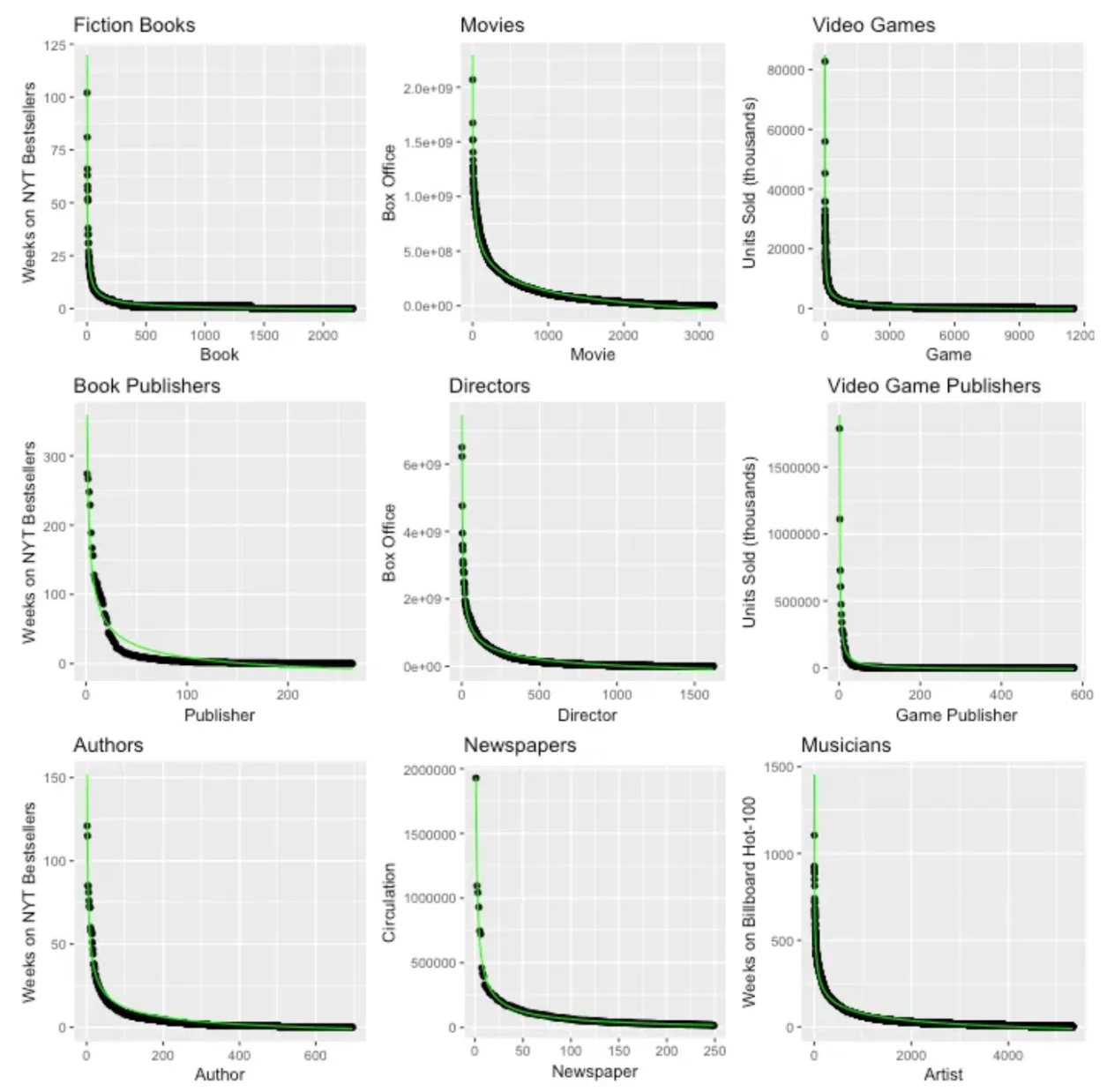
Power laws are universal, so a core question is: the distribution of creative skills in the world is not uniform. Top writers or film directors are indeed much better than the 100th ranked.
So, what does this mean for creator economy companies?
- When creator economy companies first launch, the long-tail creators they initially attract are not very impactful.
- To scale, platforms need to attract top creators.
- Even if your platform has a large number of creators, revenue is often concentrated among a small group—thus, if top creators leave, finances may suffer significant negative impacts.
These dynamics imply that the initial phase of a startup launch may be fraught with crises. The best companies can gather a large number of small creators to the point where quantity begins to matter, or organically attract large/mid-sized creators. If a startup acquires/controls many creators itself, it indicates that the product may not be solving a sufficiently large problem or may not be able to solve it independently.
Bio Link Battle
Social media platforms like Instagram and TikTok have advertising business models, so they do not want to give people "too much" organic traffic. They prefer that you pay for sponsored posts, creators, and ads. One way they achieve this is by providing a single link to drive organic traffic, the infamous "ink in bio."
For creator economy startups, the bio link is significant. If you can convince creators to include your startup in this link, organic traffic will follow. Combined with some monetization mechanisms, startups can take a share. In the early stages of the creator economy cycle, startups were competing with non-commercial links—either links pointing to other social media profiles or personal websites. But over time, people began filling their bios with high-revenue links like Patreon, Substack, Twitch, etc., intensifying competition.
Now, replacing another startup's bio link is a zero-sum battle. The only way to gain organic traffic from creator profiles is to commercialize better than older, more established competitors. If you merely match what incumbents might offer you, that is not enough. You must find something different, whether it is within the creator's content itself, be it video, text, or other forms. Regardless, new entrants will find a major obstacle; while they may initially want to subsidize growth with investor funds, this may not be sufficient to achieve meaningful scale.
Graduation Problem
The graduation problem refers to what happens when your best creators scale up and eventually "graduate"—they leave your platform along with their fans. Why does this happen? Creators provide clear value to startups by driving traffic, creating content, and monetizing through users. But as creators' influence grows, they often begin to think they are "too" attractive. They start to wonder why they should share profits with you when they did all the work. Due to the impact of the power law curve, this issue is particularly severe, as a few whales often dominate revenue. If whales start asking whether they can replicate your product by hiring agencies to build their own websites, they will ultimately want to "graduate" from your platform and establish their own.
The creator economy is often compared to market startups. In this field, companies like Airbnb or Uber independently aggregate supply and demand on the network. These markets perform best when both sides are highly decentralized, which is why the biggest outcomes are C2C or consumer-to-SME markets, rather than B2B. In the initial formation process, creator economy startups looked more like B2B networks, or even SaaS platforms—where their customer base (creators) is highly concentrated, and creators bring in consumers.
To address the graduation problem, creator economy startups must provide value that far exceeds the utility of payments and other monetization techniques. They need a moat, not just against external companies, but also against those creators who want to graduate over time. The best way is to create network effects themselves and bring them to each creator, forming a bidirectional network with all the usual advantages. The additional features created by the startup should ideally be proprietary. If a creator economy company powered by AI develops a very good foundational model that allows creators to monetize 10 times better than before, then creators are less likely to leave.
Algorithm Feast
Creator economy startups often find themselves highly dependent on viral content from social media platforms. If a video goes viral on TikTok, the user acquisition for the creator economy platform may increase significantly. But startups are always trying to achieve stable growth, which is difficult to sustain at 20% quarter-over-quarter growth, unlike SEO, referral programs, or paid marketing. In contrast, market startups increase value by aggregating both sides of the market—often spending billions to build buyer and seller systems. During Uber's rapid growth years, the annual marketing budget for acquiring passengers was $1 billion, and nearly $2 billion for drivers, in addition to diversifying into SEO, brand marketing, paid, referral programs, partnerships, etc. This added a lot of value, connecting buyers and sellers.
The difference for creator economy startups is that they rely on creators to find consumers, but in doing so, they are highly dependent on a single channel. Dependence on a single marketing channel is always risky, as we saw in previous years when changes in SEO algorithms wiped out many content sites reliant on SEO. Dependence on social media is even more fragile, as content is naturally more ephemeral and subtle. I believe this is also one of the reasons subscriptions have become the dominant business model for successful creator economy companies—it allows creators to obtain long-term, sustainable revenue streams from each fan.
Algorithmic recommendations are also a competitive factor. In recent years, we have seen YouTube, Twitch, Twitter, and other underlying platforms attempt to pay creators directly and play a more vertically integrated role in the creator economy.
Of course, the best solution is to build additional marketing channels to improve predictability. By combining social media channels with traffic from referrals, SEO, mobile installs, etc., the growth curve becomes more sustainable. But in the early stages of creator economy startups, they often go all-in on social, only to choose to invest in other channels after achieving success.
Advantages and Future of Creator Economy Companies
Creator economy companies have evolved into their second and third generations. The bar has been raised; startups no longer offer flashy tipping features but instead build mature products—supporting multiple platforms, new forms of interaction, and providing creators with new ways to engage with fans. Startups are not launching a product led by a celebrity and hoping for success; they are building real technology combined with broad market strategies.
The advantage of the creator economy industry lies in the use of mobile devices and the continued rapid growth of social media platforms, which reduces the time people spend watching television:
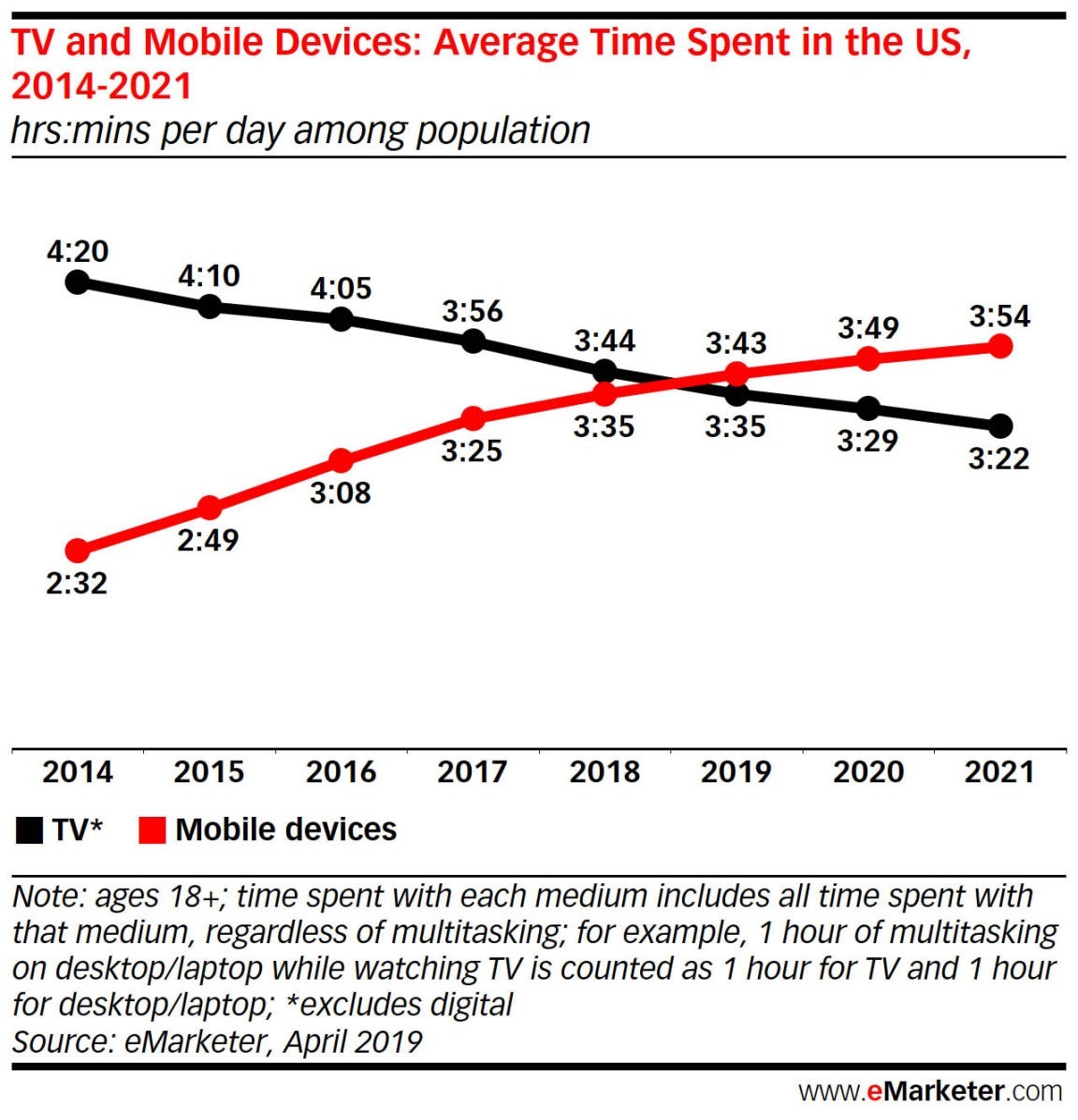
Of course, this movement is largely driven by the younger generation:
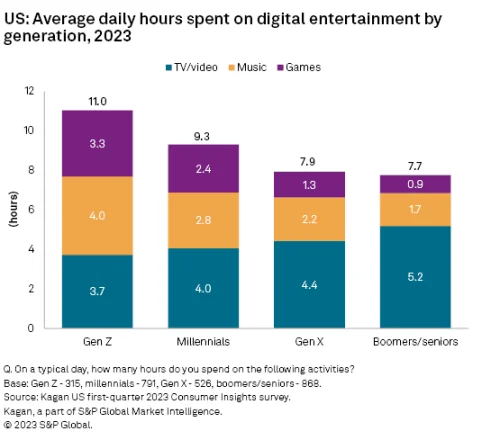
By the way, can you believe that most people over 18 still watch 4-5 hours of television every day?
The key is that social media continues to play a huge role, and creators are ultimately becoming new participants in the economy, gaining power in both cultural and economic aspects. The products and tools they use to achieve their goals will continue to be attractive. Because ultimately, creators themselves do not want to rely on a single social platform. If they are strong in video, they will want to create podcasts and have a large Instagram presence. Compared to large social platforms, startups can always be more creator-friendly.
Therefore, I believe the future of the creator economy remains promising, but the path has changed significantly, and the standards have been raised. Startups need to provide new features, create new forms of monetization, and adopt new technologies to better withstand competition. Personally, I am more interested in AI or video-first creator economy startups that behave more like markets, providing highly managed solutions for both sides. I am more optimistic about startups that can charge $1,000 from a smaller user base rather than companies that charge everyone a $2 tip. In the coming years, we will see more viable changes, and considering potential consumer trends, I believe the creator economy will continue to be a cradle for high-value startups.






